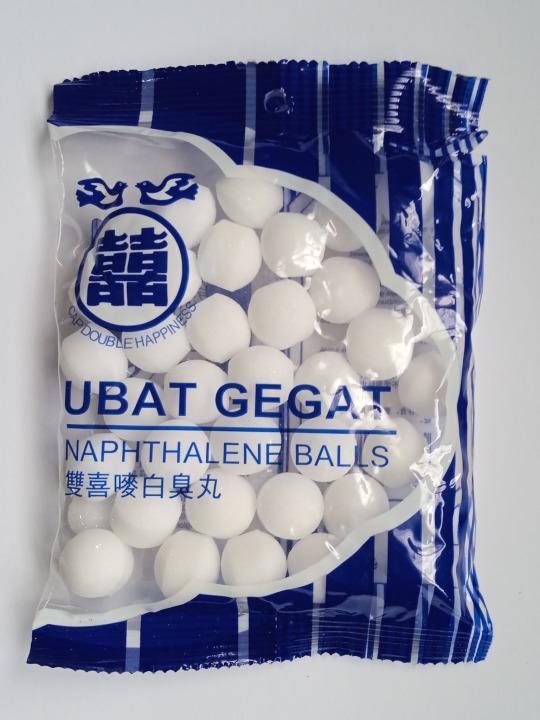#Naphthalene
Explore tagged Tumblr posts
Text

#i was trying to do the thing where you do the (taller person) POV#but idk perspective so#he looks like a sad clown or a drowned cat#(🥰🥰🥰🥰🥰)#sova#naphthalene#Spotify
7 notes
·
View notes
Text

Mothball
#mothball#mothballs#insecticide#wikipedia#wikipedia pictures#naphthalene#pesticides#pesticide#insecticides
21 notes
·
View notes
Text
Crying with laughter adding a sun tzu “know your enemy” reference into a naphthalene lab report - I need 10 references from somewhere may as well be a couple years ago
0 notes
Text
The amphiphilic character gives n-octanol a solvating ability not unlike that of HM and other naturally occurring organic colloids (Fig. 14.15) in that it has done ability to associate with both polar and non-polar compounds.

"Environmental Chemistry: A Global Perspective", 4e - Gary W. VanLoon & Stephen J. Duffy
#book quotes#environmental chemistry#nonfiction#textbook#amphiphilic#octanol#solvent#humic material#colloid#polarity#naphthalene#phenol#hydrophobic#organic chemistry
0 notes
Text
The amphiphilic character gives n-octanol a solvating ability not unlike that of HM and other naturally occurring organic colloids (Fig. 14.15) in that it has done ability to associate with both polar and non-polar compounds.

"Environmental Chemistry: A Global Perspective", 4e - Gary W. VanLoon & Stephen J. Duffy
#book quote#environmental chemistry#nonfiction#textbook#amphiphilic#octanol#solvent#solubility#humic material#colloid#organic chemistry#chemical reactions#polarity#naphthalene#phenol#hydrophobic#solute
0 notes
Text

TSRNOSS, p 682.
#naphthalene#salicylic acid#homocysteine#sister chromatid exchanes#crystals of calcium oxalate#Glycine max#evolution of homeothermy#hypophosphatemia#blue green algae#homozygosity#iron oxide#pro-oxidant#France#wine consumption#satyendra sunkavally#manuscript#handwriting#theoretical biology
0 notes
Text
Naphthalene Prices, News, Trend, Graph, Chart, Forecast and Historical
The global market for naphthalene has been subject to significant fluctuations in recent years, influenced by various factors such as raw material availability, demand from different industries, and geopolitical events. Naphthalene, a polycyclic aromatic hydrocarbon, is primarily used in the production of chemicals like phthalic anhydride, which is a key component in the manufacturing of plastics, resins, and detergents. Additionally, naphthalene finds applications in the textile industry, as a moth repellent, and as a key raw material for producing certain dyes and disinfectants. This wide array of uses makes naphthalene a crucial component in several industrial sectors, contributing to the variation in its pricing.
One of the key drivers influencing naphthalene prices is the supply and demand dynamics in the global market. As naphthalene is derived from coal tar and petroleum, the availability and prices of crude oil and coal can directly impact the cost of naphthalene production. In periods of oil price increases or coal shortages, naphthalene production costs rise, consequently affecting its market price. Additionally, fluctuations in the supply chain, such as disruptions in key producing countries or changes in refinery outputs, can lead to short-term price hikes or drops. The reliance on these raw materials makes naphthalene prices highly sensitive to global energy prices and production shifts, contributing to volatility in the market.
Get Real time Prices for Naphthalene: https://www.chemanalyst.com/Pricing-data/naphthalene-1130
In recent years, the demand for naphthalene has seen substantial growth in emerging markets, particularly in Asia-Pacific countries like China and India. These nations have rapidly growing manufacturing sectors that rely on naphthalene as a critical component in various chemical processes. As a result, naphthalene prices have witnessed upward pressure due to the increase in demand from these regions. For instance, the rise in demand for phthalic anhydride and plastic products has bolstered the consumption of naphthalene in the industrial sector. Additionally, the growing textile industry in countries like India has spurred the need for mothballs and other naphthalene-based products, further driving demand.
On the other hand, developed markets such as the United States and European Union also play a significant role in determining the global price trends for naphthalene. These regions have stringent environmental regulations that impact the production and consumption of naphthalene-based products. Regulatory bodies in these countries often impose restrictions on emissions and the use of hazardous chemicals, which can lead to increased production costs for manufacturers. Furthermore, in these developed markets, the demand for naphthalene may fluctuate based on shifts in consumer preferences, technological advancements, and the adoption of alternative chemicals. Despite these challenges, naphthalene remains an important industrial chemical due to its cost-effectiveness and versatility.
The market for naphthalene is also affected by factors related to environmental concerns and sustainability practices. Increasing environmental awareness has led to growing scrutiny of chemicals like naphthalene, particularly due to their potential health risks and environmental impact. Naphthalene is known to be a volatile organic compound (VOC) and can pose health risks if inhaled in large quantities or over extended periods. This has prompted manufacturers to seek alternatives or adopt cleaner production methods to mitigate the environmental footprint of naphthalene production. In response, innovations in the chemical industry have led to the development of more eco-friendly alternatives to naphthalene, which could potentially impact its demand and price in the future.
Another significant factor influencing naphthalene prices is the role of global trade. International trade policies, tariffs, and export/import restrictions can have a considerable effect on the movement of naphthalene across borders. For instance, changes in trade policies between major producing countries like China, India, and the United States can result in price fluctuations. Trade restrictions, especially in times of political uncertainty or trade disputes, can lead to supply chain disruptions, which in turn affect naphthalene prices. The market is also impacted by the activities of large multinational corporations involved in naphthalene production and distribution, as they often dominate the global market and can influence pricing trends.
Looking ahead, the future of naphthalene prices is expected to be shaped by several trends. The increasing demand for sustainable chemicals and materials could lead to the development of alternative products that may displace naphthalene in some applications. However, naphthalene’s unique properties, especially in industries like plastics, textiles, and chemical manufacturing, ensure that it will remain an essential component in many industrial processes for the foreseeable future. Additionally, global economic conditions, geopolitical events, and fluctuations in the price of crude oil will continue to be key factors in determining the cost of naphthalene. As such, stakeholders in the naphthalene market must stay attuned to these factors to navigate the complexities of price changes and ensure a competitive edge in the industry.
In conclusion, the naphthalene market remains highly dynamic, driven by the interplay of supply and demand factors, raw material costs, and global trade conditions. While emerging economies are contributing to the rising demand for naphthalene, environmental concerns and regulatory challenges in developed regions are expected to influence future market trends. As the industry continues to evolve, market players must adapt to these changes, balancing the growing demand for naphthalene with the increasing need for more sustainable production practices. The outlook for naphthalene prices will be shaped by these forces, making it essential for businesses to monitor the market closely for potential opportunities and challenges.
Get Real time Prices for Naphthalene: https://www.chemanalyst.com/Pricing-data/naphthalene-1130
Contact Us:
ChemAnalyst
GmbH - S-01, 2.floor, Subbelrather Straße,
15a Cologne, 50823, Germany
Call: +49-221-6505-8833
Email: [email protected]
Website: https://www.chemanalyst.com
#Naphthalene#Naphthalene Price#Naphthalene Prices#Naphthalene Pricing#india#united kingdom#united states#germany#business#research#chemicals#Technology#Market Research#Canada#Japan#China
0 notes
Text
Aromatic Compounds

0 notes
Text
Will Graham's aftershave is repulsive to Hannibal Lecter both for its unpleasant smell (synthetic + gone rancid — neglect of the body that houses such an alluring mind is an insult) and for the fact that it's someone else's interpretation of Will — someone picked out a scent that they thought fit Graham, and Lecter hates that he dons that like a cover for his actual self beneath. Which is why recommending a preferred scent, Hannibal's preferred scent for Will, is deliciously possessive.
#nbc hannibal#I need to find a fragrance that works for me because I just smell like menthol and naphthalene these days#will graham
26 notes
·
View notes
Text
I've come to realize that, growing up, I did not appreciate the bug room in my hometown zoo nearly enough.
#i open my closet to the smell of naphthalene and the image of walls covered in entomology display cases surfaces in my mind#text
19 notes
·
View notes
Text


「GAH!—」
the yell from froggy's throat makes his eyes bulge out like weird plastic toys squeezed by an anger management patient. a loud croak at about the same moment—yet somehow, he stays remarkably on balance. one leg seems to be all he needs—the other bends halfway, though its sandal dangles precariously off its foot.
「Ahh, careful where you point that!」
a fat mascot palm hits the side of his head, shaded face grimacing. froggy groans.
「I could hear you just fine...」
he settles a bit and waves her off the moment her motives become clear.
「Yeah, yeah. You got me, you got me. Seriously, where'd this come from...? If you have time to prank me, you're better off getting this job done.」
[ @adoranoia ; DREAM BBQ's ∃NA ]
#ic.froggy: it reeks of naphthalene in here!#☆ summon the huntsman! ( answered asks )#adoranoia#TOTALLY FINE I HAVE MORE MUSE FOR THE ENACREW ANYWAYS#YAYYYY
1 note
·
View note
Text

save me sasha
#sova#sasha save me. sasha. save me sasha#naphthalene#every time i draw something good its on like the edge of a paper#and then im terrified to colour or ink it#his other eye is supposed to be blue btw#i didn't just forget one pupil#he turned out more babygirlified than i intended
10 notes
·
View notes
Text

Mothball
#mothball#mothballs#naphthalene#insecticide#pesticides#pesticide#insecticides#wikipedia#wikipedia pictures
19 notes
·
View notes
Text
Naphthalene has a planar structure with a cloud of 10 π electrons delocalised above and below the molecular plane (figure 7.6).

"Chemistry" 2e - Blackman, A., Bottle, S., Schmid, S., Mocerino, M., Wille, U.
#book quotes#chemistry#nonfiction#textbook#naphthalene#structure#electrons#electron cloud#localized#delocalized
0 notes
Text
Naphthalene is a white solid that melts at 80 °C.
"Chemistry" 2e - Blackman, A., Bottle, S., Schmid, S., Mocerino, M., Wille, U.
0 notes
Text
Naphthalene Sulfonate Market Size, Regional Revenue 2025-2037
A comprehensive analysis of the Naphthalene Sulfonate Market Size, Share, Latest Trends, and Growth Research Report 2025-2037 provides an accurate overview and thorough analysis of the market industries in the present and the future. This report provides a comprehensive overview of the market, including current market trends, future projections, and an in-depth analysis of the major players in the industry. It provides a comprehensive overview of the market, including current market trends, future projections, and an in-depth analysis of the major players in the industry.
Report findings provide valuable insights into how businesses can capitalize on the opportunities provided by these dynamic market factors. It also provides a comprehensive overview of the major players in the industry, including their product offerings, contact and income information, and value chain optimization strategies. Furthermore, it offers an in-depth analysis of the leading businesses in the industry based solely on the strength of their business plans, product descriptions, and business strategies. Request Report Sample@ https://www.researchnester.com/sample-request-7045
Key Findings
Analyzing the Naphthalene Sulfonate Market
A thorough understanding of the Naphthalene Sulfonate Market will provide businesses with opportunities for growth such as customer acquisition, enhancements to their services, and strategic expansions.
By incorporating market intelligence into their operations, businesses can anticipate changes in the economy, assess the effect these factors may have on their operations, and create plans to counteract any negative effects.
Market intelligence helps organizations stay ahead of the curve through insights into consumer behavior, technological advancements, and competitive dynamics.
Using Naphthalene Sulfonate Market data can provide organizations with an edge in the competitive market and establish prices and customer satisfaction levels.
In a dynamic market environment, business validation helps companies develop business plans and assures their long-term survival and success.
What are the most popular areas for Naphthalene Sulfonate Market?
Report highlights include:
There is a 360-degree synopsis of the industry in question in this study, which encompasses all aspects of the industry.
The report presents numerous pricing trends for the Naphthalene Sulfonate Market.
Additionally, the report includes some financial data about the companies included in the competitive landscape.
The study enumerates the key regulatory norms governing the keyword market in developed and developing economies.
Additionally, the Naphthalene Sulfonate Market report provides definitions of the market terms referred to in the document for the sake of convenience.
Future Potential
In the keyword research report, various primary and secondary sources are used to describe the methodology of conceptualizing the study. It has been discussed in the study what the scope of the report is and what elements it contains in terms of the growth spectrum of the keyword. The document also includes financial data of the companies profiled, along with the current price trends of the Naphthalene Sulfonate Market.
Access our detailed report@ https://www.researchnester.com/reports/naphthalene-sulfonate-market/7045
Research Nester is a leading service provider for strategic market research and consulting. We aim to provide unbiased, unparalleled market insights and industry analysis to help industries, conglomerates and executives to take wise decisions for their future marketing strategy, expansion and investment etc. We believe every business can expand to its new horizon, provided a right guidance at a right time is available through strategic minds. Our out of box thinking helps our clients to take wise decision in order to avoid future uncertainties.
Contact for more Info:
AJ Daniel
Email: [email protected]
U.S. Phone: +1 646 586 9123
U.K. Phone: +44 203 608 5919
#Naphthalene Sulfonate Market Size#Naphthalene Sulfonate Market Share#Naphthalene Sulfonate Market Forecast#Naphthalene Sulfonate Market Overview
0 notes